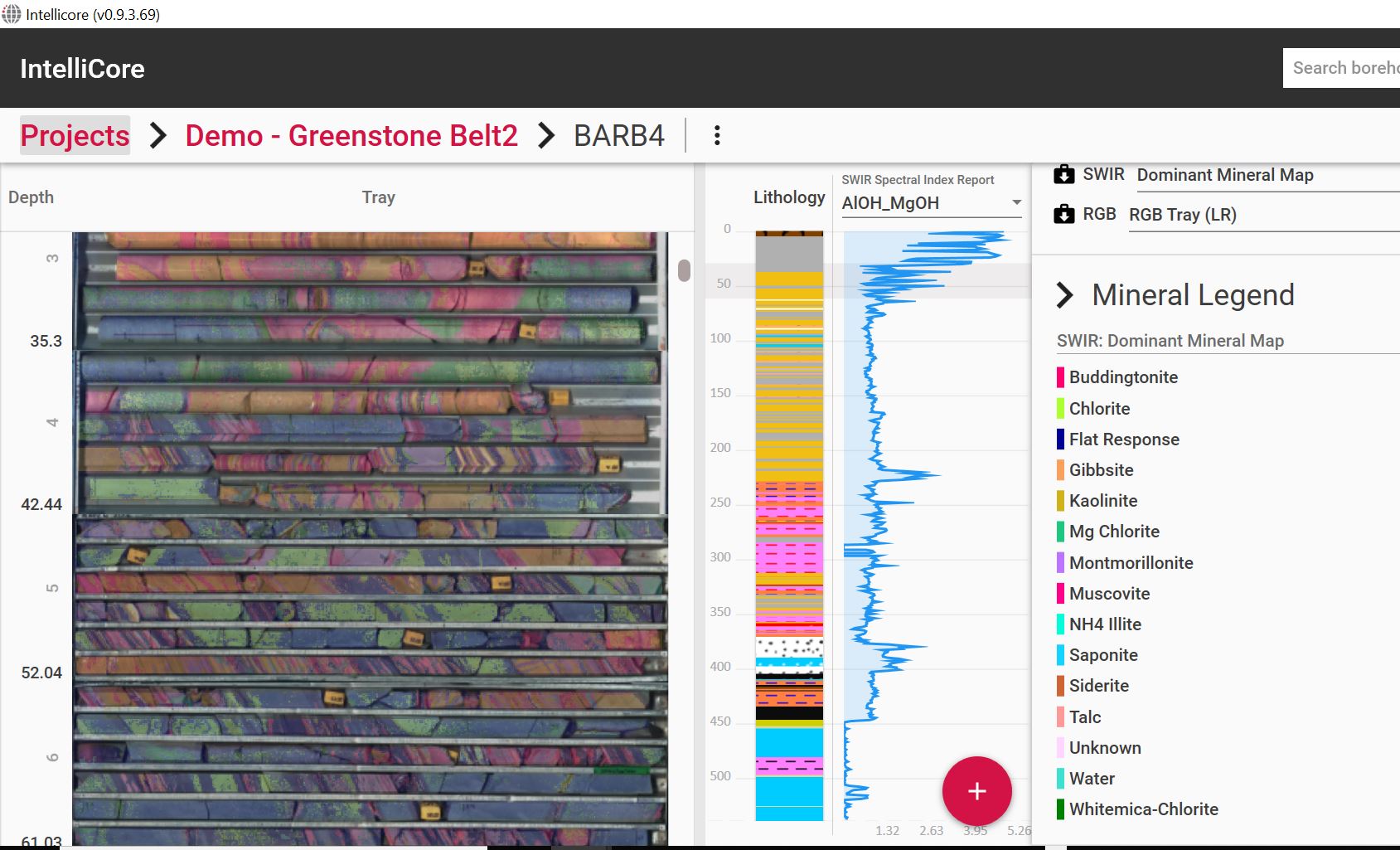What is deep learning?
The term ‘deep learning’ is generally affiliated with a specific set of machine learning algorithms known as artificial neural networks that are patterned after the way a human brain and nervous system process data. Whereas standard machine learning algorithms were developed to process structured data (data which is organized and can be readily stored in a relational database, i.e. assay data), deep learning algorithms are ideally suited for processing complex, unstructured data such as imagery, videos, audio snippets and large blocks of text.
A relatively new source of drillhole data, hyperspectral imagery, provides continuous compositional (mineralogy) information along the core face. The image data provides far more information than traditional borehole assay, is ideally evaluated using a deep learning approach, and represents “next-generation” data for supporting decisions made during all stages of the project life cycle.
HYPERSPECTRAL MINERALOGY
What is hyperspectral mineralogy?
Hyperspectral mineralogy is image-based data that is collected along the drillhole core face using short- and long-wave infrared (SWIR and LWIR) technology. Hyperspectral mineralogy offers the following advantages over traditional assay:
- The data is continuous and contains significantly more information than traditional assay (which is composited over an interval of several meters or more
- The imagery contains ‘organized’ compositional, structural and paragenetic information (i.e. alteration assemblages, structural events, depositional sequences)
- Different spectral filters can be applied to emphasize specific mineralogical properties, thereby increasing the amount of information provided
- Borehole scans are non-destructive and the data can be used throughout the project life cycle
- Use of digital imagery represents a quantum step towards the development of a digital production environment for real-time, rapid decision making and evaluation of alternatives
DATA COLLECTION
How is hyperspectral image data collected?
Life Cycle Geo partners with TerraCore, the world’s leading provider of hyperspectral imaging. Drillcore can either be sent to TerraCore for scanning or scanned on-site. Hyperspectral cameras image the core, the output data is interpreted by spectral geologists, and interpreted results displayed using Intellicore® software. The initial scanning steps involve the following:
High resolution hyperspectral and photo images are captured and portions of the corebox containing rock sample are masked.
Short-wave and long-wave infrared images are captured by different resolution cameras and processed independently.
The subsequent image processing steps are as follows:
A camera sensor detects all individual core segments within a corebox.
Downhole depth (segment start/end) is assigned to each segment by a spectral geologist.
The masked, registered core segments are concatenated together after all gaps are removed.
This same process is repeated for each corebox.
COMBINATION
How are deep learning and hyperspectral mineralogy combined?
Hyperspectral images present a data-rich environment that can be used across the project life cycle when combined with deep learning algorithms. Some examples:
- Brownfields exploration: deep learning models can be trained to recognize hyperspectral image intervals representing variable distance to mineralization. When a blind hole is drilled and scanned, it can be evaluated for proximity to previously unidentified mineralization.
- Operational grade control: hyperspectral imagery representing variable grade ore can be identified by deep learning algorithms and used for block modeling and segregation purposes. This is especially useful for multi-element ores and ore with variable geometallurgical properties.
- Environmental waste management: waste materials with variable acid rock drainage and metals leaching potential can be identified using the combined hyperspectral imagery/deep learning approach towards materials management and the evaluation of materials management alternatives.
This sounds complicated. What steps are required to prepare the imagery for machine learning analysis?
Broadly speaking, the following are some of the steps taken to prepare hyperspectral data for processing by deep learning algorithms:
- Data analysis: unsupervised methods such as clustering and principal component analysis are used to explore quantitative data that is provided with hyperspectral imagery, to both understand its structure and reduce its dimensionality. This analysis guides how the hyperspectral imagery is filtered and weighted prior to artificial neural network analysis.
- Gaps and core loss: depth tags placed in the core box by the geologist who logged the core are analyzed to address gaps in core and calculate core loss for accurate depth registration.
- Image concatenation and splitting: hyperspectral images from different core boxes are joined together to form one long borehole image so that they can then be split into the image length required for deep machine learning. This includes accounting for the fact that images from different core boxes can be of different resolution (pixel/distance density) and width.
- Workflow automation: the process of image concatenation and splitting can be automated using a scripting language such as R or Python, and the workflow assembled using applications such as Jupyter Notebook and Microsoft Azure Databricks.
Deep learning modeling: images are ported into a cloud-based, deep learning environment such as the Microsoft Computer Vision API where various neural network algorithms can be applied. Model results report a predictive accuracy, which can be improved by iteratively re-applying each of the previous steps (especially unsupervised analysis, which is the most critical step towards increasing accuracy).


